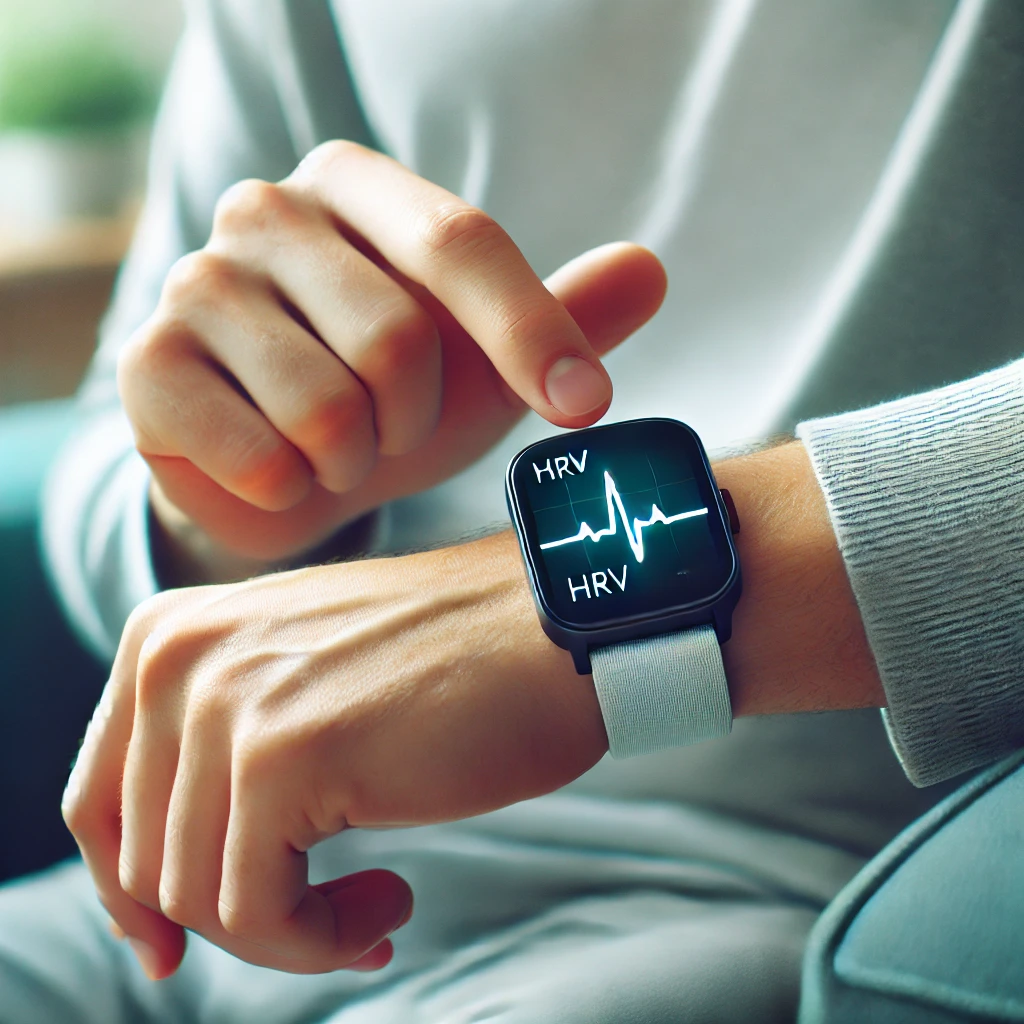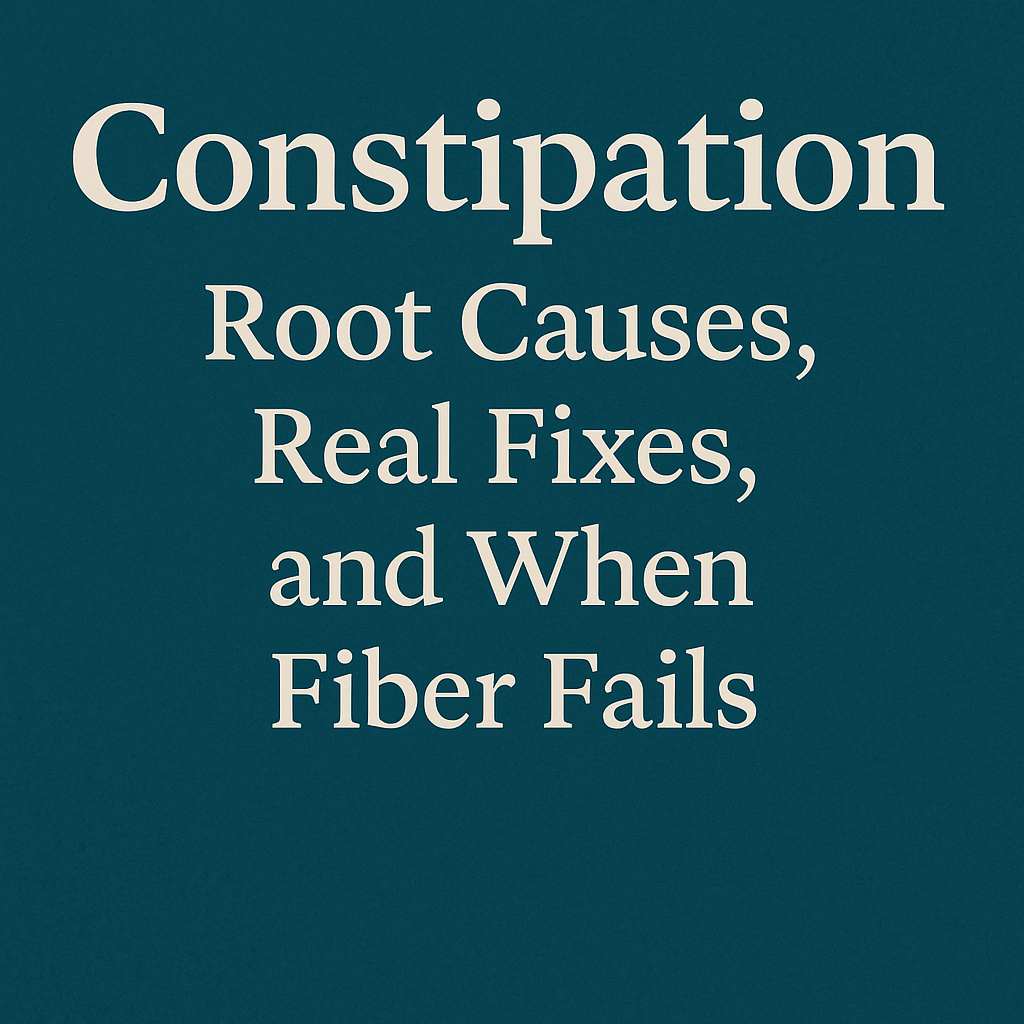The Science of Heart Rate Variability—and How to Use HRV to Improve Your Health

What we’ll cover
Did you know that subtle variations in your heartbeat could be the key to unlocking peak performance, reducing stress, and even predicting your overall health? This phenomenon, known as heart rate variability (HRV), measures the variation in time between heartbeats and reflects the intricate balance between your nervous system and heart.
High HRV indicates a resilient, adaptable nervous system capable of efficiently responding to stress and maintaining overall health. This resilience often correlates with better cardiovascular health, reduced risk of chronic diseases, and improved emotional well-being. Conversely, low HRV can signal stress or potential health concerns.
Whether you’re a busy professional dealing with burnout, an athlete fine-tuning your training regimen, or someone eager to learn more about your body, knowing your HRV could be the game-changer you never knew you needed. Tracking this vital sign has become more accessible with wearable devices like the Apple Watch, Whoop, or Oura ring.
However, HRV remains a mystery to many. Let’s delve into why you should pay attention to it and how to use it to improve your health.
What is HRV?
In the early 1960s, Dr. Edward Hon and Dr. Reuben Lee discovered the significance of “beat-to-beat variability” in fetal health, later known as heart rate variability (HRV). They found that the variability in time between heartbeats could signal fetal distress before any noticeable changes in the overall heart rate pattern. This groundbreaking discovery led to the development of electronic fetal monitoring systems, revolutionizing prenatal care.
Fast forward to today, and HRV has become an essential metric for assessing overall health. HRV measures the variations in time between heartbeats, offering insights into the balance between the parts of your nervous system that handle stress and recovery.
Why HRV Matters to You
Understanding HRV can unlock a wealth of information about your health. This simple metric provides insights not only into the health of your heart but also into how well your body is managing stress, recovering from exercise, and maintaining emotional stability. Here’s why you should pay attention to HRV:
HRV as a Predictor of Heart Health
HRV is a significant indicator of your heart’s health because it reflects the balance and function of your autonomic nervous system, which regulates heart rate. A higher HRV means your heart can efficiently adapt to varying demands, indicating good cardiovascular fitness and a resilient heart. Conversely, low HRV can signal potential heart problems, such as an increased risk of arrhythmias, heart disease, or sudden cardiac death. Monitoring HRV can help you gain insights into cardiovascular health and detect potential issues early.
HRV and Recovery
Monitoring HRV is particularly useful for athletes and fitness enthusiasts. It helps you understand how well your body is recovering from exercise. High HRV typically means your body is recovering well and is ready for more training. At the same time, low HRV can indicate overtraining or insufficient recovery, signalling the need for rest or lighter workouts. This insight can help prevent injuries and optimize your training regimen.
HRV and Emotional Regulation
HRV is closely linked to emotional regulation and mental health. Studies have shown that people with higher HRV tend to have better emotional regulation, greater emotional resilience, and a lower risk of anxiety and depression. A high HRV reflects a well-functioning parasympathetic nervous system, which helps manage stress responses and maintain emotional stability.
HRV and Sleep Disorders
HRV monitoring can also help detect sleep disorders. For example, individuals with sleep apnea often show decreased HRV due to disrupted sleep and intermittent hypoxia. Addressing such conditions can improve HRV and overall health, leading to better sleep quality and well-being.
How to Monitor Your HRV
Tracking HRV with devices like the Apple Watch, Whoop, Oura ring, and other wearables has become increasingly popular. Here are some considerations to keep in mind:
- Accuracy: Devices like the Apple Watch, Whoop, and Garmin wearables use photoplethysmography (PPG) sensors to measure HRV. While these measurements are generally accurate, they can be influenced by factors such as movement, skin tone, and the device’s positioning.
- Consistency: Wearables provide consistent, long-term HRV data, revealing patterns and trends that might not be apparent with occasional measurements. This helps users make informed decisions about their health and fitness routines.
- Validation and Limitations: Many wearables are validated for HRV tracking, but their accuracy may not match that of clinical-grade equipment like ECG-based HRV monitors. However, for most users, wearables’ relative accuracy and convenience make them a valuable tool for monitoring HRV trends.
When to Check HRV
The best times to measure HRV are in the morning, before and after exercise, and before bed. Morning measurements provide a baseline for your daily autonomic function, while pre- and post-exercise measurements help gauge your body’s response and recovery. Evening readings can give insights into how your daily activities and stressors affect your autonomic balance.
Tracking Trends
Tracking HRV over time is important rather than focusing on single readings. Look for patterns and deviations from your norm to understand how stress, sleep, diet, and exercise impact your HRV. Consistent tracking can help you make more informed decisions about your health and wellness.
So What’s a Good HRV Score?
There is no one-size-fits-all answer for a “good” HRV score. HRV can vary significantly between healthy individuals due to age, gender, and fitness level. The key is to focus on your trends over time rather than comparing your numbers to others.
How to Improve Your HRV
Here are some effective strategies to enhance your HRV:
Exercise Regularly
Regular exercise, such as walking, running, cycling, swimming, and resistance training, enhances cardiovascular fitness and HRV. Consistent exercise also helps manage stress and improve overall resilience.
Decrease Alcohol Intake
Alcohol consumption can significantly decrease HRV, indicating increased stress on the body and reduced autonomic function. By monitoring HRV on nights you drink versus nights you don’t, you can observe the impact and make informed decisions about your alcohol intake.
Prioritise Sleep
Good sleep quality is closely linked to higher HRV. To ensure adequate sleep, create a sleep-friendly environment, maintain a consistent sleep schedule, and avoid stimulants like caffeine before bed.
Incorporate Breathing Exercises
Techniques like diaphragmatic breathing, box breathing, or the 4-7-8 method can activate the parasympathetic nervous system, helping to increase HRV and improve emotional stability.
Mindfulness and Meditation
Simple meditation techniques and mindfulness practices can improve HRV and enhance your ability to regulate emotions. Focusing on breathing and being present in the moment helps calm your mind and reduce stress.
Optimise Your Nutrition
Certain nutrients and dietary practices can positively influence HRV:
Omega-3 Fatty Acids: Omega-3 fatty acids, found in fish, flaxseeds, and walnuts, help reduce inflammation and improve heart health, enhancing autonomic function and increasing HRV.
- Probiotics and Gut Health: A healthy gut microbiome, supported by fermented foods like yogurt, kefir, sauerkraut, and kombucha, can improve HRV by reducing inflammation and enhancing the gut-brain axis.
- Polyphenols: Foods rich in polyphenols, such as berries, dark chocolate, and green tea, have been associated with improved HRV due to their antioxidant and anti-inflammatory properties.
- Magnesium: Adequate magnesium intake in leafy greens, nuts, seeds, and whole grains is crucial for maintaining high HRV. Magnesium plays a role in muscle relaxation, reducing stress, and supporting overall autonomic balance.
- Hydration: Staying well-hydrated is essential for maintaining optimal HRV. Dehydration can stress the cardiovascular system and reduce HRV. Drinking adequate water throughout the day supports overall health and autonomic function.
Trust the Process
Improving HRV takes time and consistent effort across multiple lifestyle areas. Be patient and focus on long-term trends rather than immediate results. Everyone’s HRV is different, and improvements may vary. Focus on your trends and personal progress rather than comparing yourself to others.
HRV is an easy, noninvasive way to monitor your health. Suppose you track your HRV trends rather than catching up on the daily ups and downs; you may notice changes that indicate whether you’re headed in the right direction wellness-wise. Tracking HRV can be an incentive to do the things you know are good for your heart and your overall health.


